|
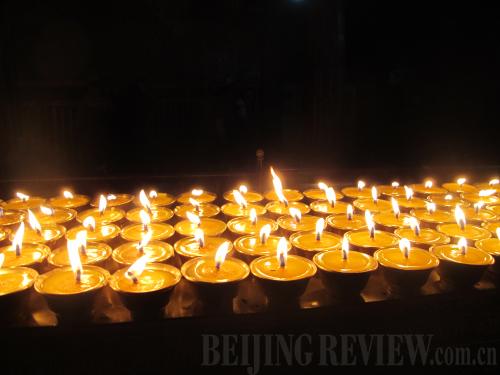 |
|
ENLIGHTENMENT: Butter oil candles line up the way from the entrance to the main hall of Jokhang Monastery in Lhasa on the Tibetan New Year Eve on March 1 (WANG HAIRONG) |
Thousands of butter oil candles flickered in the Jokhang Monastery in Lhasa, capital city of southwest China's Tibet Autonomous Region, on the eve of Losar, also known as the Tibetan New Year, which fell on March 2 this year, as people filed into the temple to offer their New Year wishes.
The line started to form in the afternoon, and winded for more than 600 meters before the temple opened its door for the New Year ceremony at 7 p.m. The ceremony would last until 6 a.m. the next day and about 100,000 people were expected to attend the ceremony, said Nima Ciugene, a senior monk.
The Jokhang Monastery is a major destination for Tibetan pilgrims. Its main hall houses a statue portraying Sakyamuni at age 12. The statue was brought to Tibet by Princess Wencheng (625-680) of the Tang Dynasty (618-907) when she married Songtsem Gampo, the Tibetan King at the time.
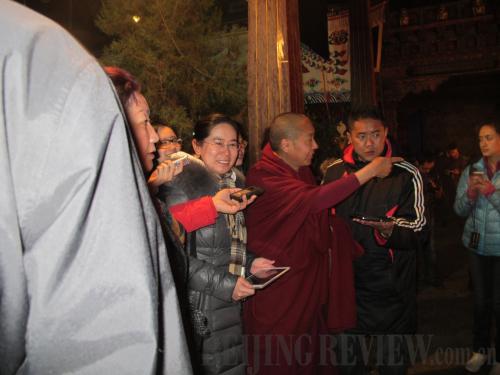 |
|
NEW YEAR WISHES: Nima Ciugene, a senior monk in Jokhang Monastery shares his three New Year wishes with reporters, March 1 (WANG HAIRONG) |
Nima Ciugene offered his three New Year wishes. He said that his first wish is for good weather, bumper harvest and healthy animals; his second wish is for the realization of the Chinese Dream of national renewal; and his third wish is for a peaceful world.
Loud fireworks exploded in the sky at midnight, announcing the arrival of the Tibetan New Year. It was the climax to weeks of preparation.
On the morning of March 2, a long queue also appeared in front of the Potala Palace. Standing in the line was 30-year-old Drolma, her husband and her 6-year old son and 5-year-old daughter, all dressed in traditional clothes. Drolma said that she was going to pray for happiness for her family and world peace.
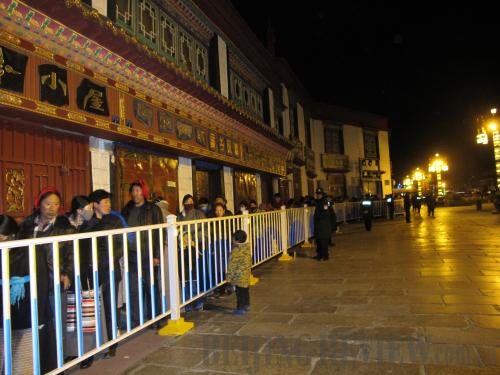 |
|
LONG QUEUE: Tibetans wait for their turn to enter Jokhang Monastery on the midnight of March 1 (WANG HAIRONG) |
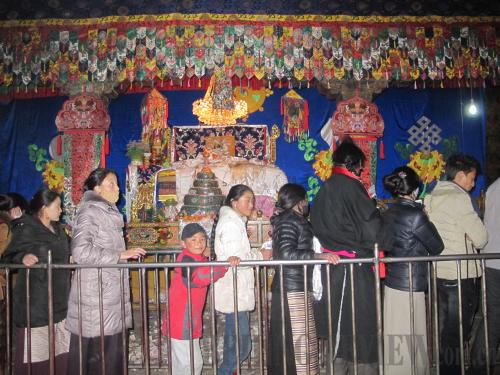 |
|
LINING UP: Visitors file into Jokhang Monastery on the Tibetan New Year Eve on March 1 (WANG HAIRONG) |
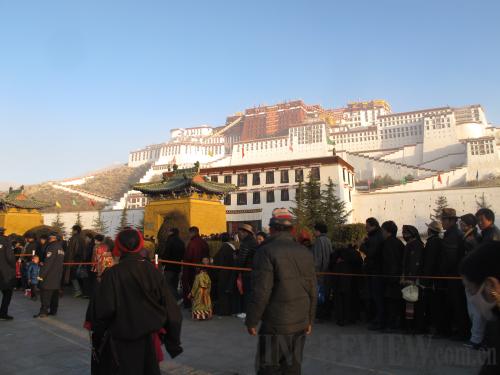 |
|
NEW YEAR MORNING: People wait to enter the Potala Palace on March 2 (WANG HAIRONG) | | 